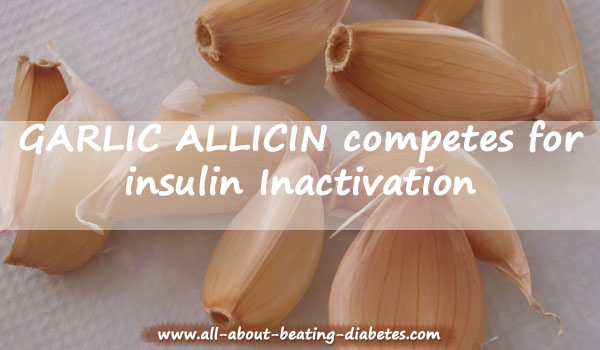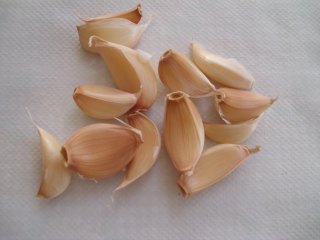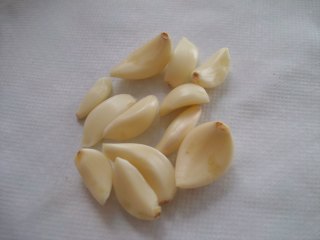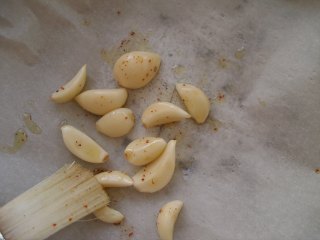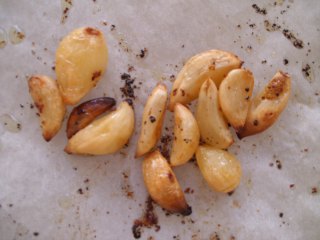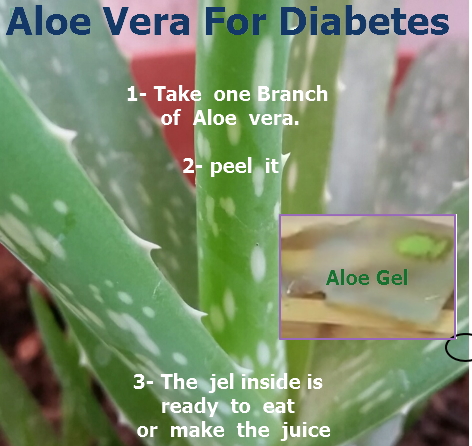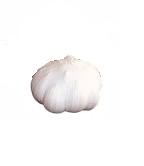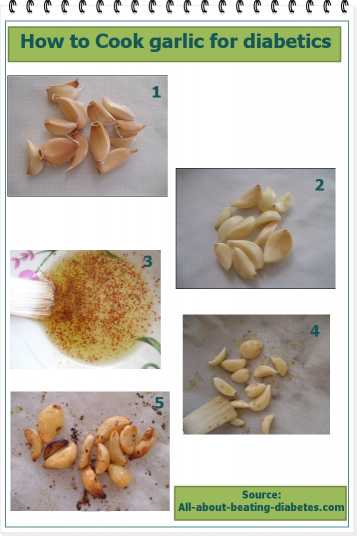- Home
- Natural Remedies
- Garlic And Diabetes Benefits
Garlic And Diabetes Benefits
Is garlic a natural remedy for diabetes?
Garlic is also known with the scientific name Allium sativum. When one is talking about garlic, it is sure onion will be next:)). For your info, the scientific name for onion is Allium cepa.
Our ancestors have been used garlic since the ancient times. In nowadays, we are wondering if there is any evidence that garlic might lower blood sugar levels?
Can garlic help lower blood sugar levels in diabetes?
Yes, there is. Actually, you can benefit from the ability of lowering blood sugar levels of garlic.
As I've always been telling you, what a food or natural remedy can do for you, and especially for your diabetes, is found inside its components.
What are the components of garlic responsible for the lowering sugar effect?
There are many components inside garlic, such as
- APDS -allyl propyl disulphide,
- ALLICIN -diallyl disulphide oxide,
- flavonoids and many others.
The most important component, which has a great impact for your health is ALLICIN as well as being responsible for the particular taste and odor that garlic has.
What this component does is to compete with insulin for insulin-inactivating sites in the liver, which results in no insulin inactivation.
Consequently, the free insulin is increased.
In fact, studies have reported that the administration of 100-125 mg/kg of Allicing to fasting humans resulted in a wonderful decrease of blood glucose levels and in a raise of serum insulin.
- Moreover, garlic might slow down the production of free radicals due to its antioxidant properties.
- There is scientific evidence to prove the benefits of garlic for diabetes. To date, Dr. Ahmed's team in the Saudi Arabia hospital, has revealed the influence of the aged garlic extract on slowing down the process of free radicals production.
- Sulfur Compounds: Garlic contains various sulfur compounds, such as diallyl disulfide and diallyl trisulfide, which have been shown to have anti-hyperglycemic effects. These compounds may stimulate the release of insulin from pancreatic beta cells and enhance the uptake of glucose by cells.
- Inhibition of Gluconeogenesis: Some components in garlic may inhibit hepatic gluconeogenesis, the process by which the liver produces glucose. By reducing the liver's glucose production, garlic can help regulate blood sugar levels.
- It was also shown that liquid garlic can prevent the severe future damages to your kidneys, blood vessels, skin and eyes by diabetes, because garlic slows down the glycation process occurring due to high blood sugar levels.
- Other benefits diabetics can get from using garlic is related to the cardiovascular (CV) system, particularly to heart disease and stroke, which are the most terrible diabetes complications appearing when your diabetes is uncontrolled.
Garlic has shown to lower the risk for the CV diseases as it can help you lowering your blood lipids levels, the “bad” (LDL) and total cholesterol, and triglycerides.
In addition, garlic intake can inhibit the process of platelet aggregation, preventing clotting of arteries or thrombosis.
Altogether, the above-mentioned actions with the smothering of blood vessels explain the anti-hypertensive effect of garlic. That’s why garlic is highly recommended to diabetics.
Some studies have been carried out to find the effectiveness of aged garlic extract of many dietary supplements you can see around in the pharmacy.
They have concluded the huge health benefits of aged garlic including the reduction in various risk factors contributing in diabetes and heart diseases.
Lowering blood pressure, reducing the high cholesterol, dilution of blood, and dilatation of the blood vessels are some of the effects of garlic that end up in improving the blood circulation.
- Garlic has also good effect in improvement of your immune system, your memory, good protector of liver, and prevents cancer and diabetes onset.
Does garlic affect insulin sensitivity in individuals with diabetes?
Garlic has been the subject of research regarding its potential effects on insulin sensitivity in individuals with diabetes.
Some studies have suggested that garlic may have a positive impact on insulin sensitivity, but the evidence is not entirely consistent.
Garlic contains various bioactive compounds, including allicin, which is thought to have potential health benefits.
Some animal and in vitro studies have shown that garlic and its components may improve insulin sensitivity, reduce blood glucose levels, and have anti-diabetic effects. However, the results of human studies are mixed.
While some clinical trials have suggested that garlic supplementation may lead to improved insulin sensitivity and better blood glucose control in individuals with diabetes, others have not found significant effects.
It's important to note that individual responses to garlic may vary, and the effectiveness of garlic in improving insulin sensitivity may depend on various factors, including the dosage, duration of use, and the specific type of garlic preparation used.
How should I include garlic in my diet if I have diabetes?
Including garlic in your diet if you have diabetes can be a healthy choice, and it's essential to incorporate garlic into your diet in a way that complements your diabetes management plan.
Here are some tips for including garlic in your diet if you have diabetes:
1. Use fresh garlic: Fresh garlic cloves have more active compounds, such as allicin, which may offer potential health benefits. Minced or crushed fresh garlic is an excellent option for cooking.
2. Practice portion control: Garlic is relatively low in calories and carbohydrates, but it can be strong in flavor. Use it in moderation to avoid overwhelming your dishes with its pungent taste.
3. Roast or sauté garlic: Roasting or sautéing garlic can mellow its flavor and make it more palatable. This method can also reduce the potential for digestive discomfort that some people experience when consuming raw garlic.
4. Add garlic to savory dishes: Incorporate garlic into your favorite savory dishes like stir-fries, soups, stews, and roasted vegetables. It can enhance the flavor of your meals without significantly impacting your blood sugar levels.
You can try also its flowers, leaves, bark, fruit, seeds, stems, roots for giving flavor to your foods.
5. Consider garlic supplements: Some people with diabetes choose to take garlic supplements in the form of garlic capsules or tablets. However, it's essential to discuss this with your healthcare provider to ensure it's safe and appropriate for your specific situation.
You can use supplement in case you cannot stand its strong odor or taste, (I know many of my friends cannot stand it).
6. Monitor your blood sugar: Keep track of your blood sugar levels when introducing garlic into your diet. While garlic may have potential benefits for diabetes management, individual responses can vary. If you notice any unusual fluctuations in your blood sugar, consult your healthcare provider.
7. Be mindful of other ingredients: When using garlic in recipes, pay attention to the other ingredients you're using. High-carb or high-sugar ingredients can have a more significant impact on your blood sugar, so balance your meals accordingly.
8. Focus on a balanced diet: Garlic is just one component of a healthy diet for diabetes management. Ensure your overall diet includes a variety of nutrient-dense foods, such as whole grains, lean proteins, vegetables, and fruits.
9. Stay consistent: Consistency is key in diabetes management. Incorporate garlic into your diet as part of a balanced, consistent meal plan rather than as an occasional or irregular addition.
Are there any potential side effects of consuming garlic for people with diabetes?
Garlic can be a flavorful and potentially beneficial addition to the diet of people with diabetes, but it should be consumed in moderation, especially if you're on medication for diabetes or other health conditions.
While garlic is generally considered safe for most people when consumed in moderation, there are a few potential considerations for individuals with diabetes:
1. Blood sugar levels: Garlic is believed to have a potential blood sugar-lowering effect.
While this can be beneficial for people with diabetes, it's important to monitor your blood sugar levels closely, especially if you are taking medication to lower blood sugar, as garlic consumption may enhance the effects of these medications.
If you are on diabetes medications, consult with your healthcare provider before adding large amounts of garlic to your diet.
2. Digestive issues: Consuming excessive amounts of garlic can sometimes lead to digestive discomfort, including upset stomach, gas, and heartburn.
People with diabetes may already experience gastrointestinal issues, so it's important to be mindful of how garlic affects your digestion.
Start with smaller amounts and observe how your body reacts.
3. Medication interactions: Garlic, when consumed in large quantities or as a supplement, may interact with certain medications, including anticoagulants (blood thinners) and antiplatelet drugs.
If you're taking these medications and want to include garlic in your diet, discuss it with your healthcare provider to ensure it won't interfere with your medication regimen.
4. Allergies and sensitivities: Some individuals may be allergic or sensitive to garlic, which can result in various symptoms such as skin rashes, itching, or gastrointestinal distress.
If you suspect you have an allergy or sensitivity to garlic, it's best to avoid it.
What is the recommended dosage of garlic for managing diabetes?
Get your copy of the free E-book. - Natural Remedies For Diabetes
Roasted Garlic Recipe
|
Step 3: Next, in another plate, pour olive oil, add salt and pepper. You can use black pepper or white pepper or any other pepper your mostly prefer. I prefer chilli pepper, that's the one I used it. |
|
Step 4: Take another oven-dish. First, cover it with a kitchen paper. Then, put the peeled garlic cloves inside. Next, brush them with the salty-pepper-oil. Cover with a foil and put inside the pre-heated oven at 150 degrees until they become nicely brown. |
|
Step 5: Once your garlic are brown, take off the oven and serve them as a side dish. Or, you can put the roasted garlic cloves in a mill and prepare a nice-flavor-garlic powder. |
Written by Dr.Albana Greca Sejdini, Md, MMedSc
Medically reviewed by Dr.Ruden Cakoni, MD, Endocrinologist
Explore more herbs.
Diabetes complications Questions or Problems? Get Help Here
This is the place where you can ask a question about any aspect of diabetes complications.
It's free and it's easy to do. Just fill in the form below, then click on "Submit Your Question".
